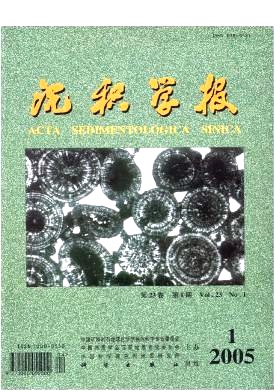HTML
| [1] | 1 朱景郊. 网纹红土的成因及其研究意义[J].地理研究,1988,(04):12-20. 2 席承藩. 论华南红色风化壳[J].第四纪研究,1991,(01):1-8. 3 朱照宇,郑洪汉,张国梅. 华南热带红土期及风化矿物初步研究[J].第四纪研究,1991.18-28. 4 赵其国. 我国红壤现代成土过程和发育年龄的初步研究[J].第四纪研究,1992.341-351. 5 赵其国,杨浩. 中国南方红土与第四纪环境变迁的初步探讨[J].第四纪研究,1995,(02):107-116. 6 朱显谟. 中国南方的红土与红色风化壳[J].第四纪研究,1993,(01):75-84. 7 杨怀仁,徐馨,杨达源. 长江中下游环境变迁与地生态系统[M].南京:河海出版社,1995.113-127. 8 杨浩,夏应菲,赵其国. 红土系列剖面的磁化率特征与古气候冷暖变换[J].土壤学报,1995,(z2):195-196. 9 杨浩,赵其国,李小平. 安徽宣城风成沉积--红土系列剖面ESR年代学研究[J].土壤学报,1996,(03):293-300. 10 黄镇国,张伟强,陈俊鸿. 中国南方红色风化壳[M].北京:海洋出版社,1996.166-296. 11 黄镇国,张伟强,陈俊鸿. 中国红土与自然地带变迁[J].地理学报,1999,(03):203-211. 12 熊尚发,刘东生,丁仲礼. 南方红土的剖面风化特征[J].山地学报,2000,(01):7-12. 13 熊尚发,丁仲礼,刘东生. 南方红土网纹: 古森林植物根系的土壤学证据[J].Chinese Science Bulletin,2000,(12):1317-1321. 14 隋淑珍,姚小峰. 中国南方第四纪红土地层[J].第四纪研究,2000,(2):182-185. 15 顾延生,肖春娥,章泽军. 中国南方红土的研究进展[J].华东师范大学学报(自然科学版),2002,(01):69-75. 16 夏应菲,杨浩. 电子自旋共振(ESR)方法在第四纪红土年代学研究中的应用[J].江苏地质,1997,(04):220-223. 17 蒋复初,吴锡浩,肖华国. 九江地区网纹红土的时代[J].地质力学学报,1997,(04):27-32. 18 于振江,黄多成. 安徽省沿江地区网纹红土和下蜀土的形成环境及其年龄[J].安徽地质,1996,(03):48-56. 19 李长安,顾延生. 江西修水第四系网纹红土的地层学研究[J].地层学杂志,1997,(03):226-232. 20 蔡述明,官子和,孔昭宸. 从岩相特征和孢粉组合探讨洞庭盆地第四纪自然环境的变迁[J].海洋与湖沼,1984,(06):527-539. 21 杨达源,韩辉友,吴新哲. 气候变化对荆江变迁的影响[A].北京:中国水利水电出版社,1999.159-177. 22 张人权,梁杏,张国梁. 洞庭湖区第四纪气候变化的初步探讨[J].地质科技情报,2001,(02):1-5. 23 黄成敏,龚子同. 热带土壤发育过程中土壤磁化率特征研究[J].海洋地质与第四纪地质,2000,(04):63-68. 24 ZhouLP,Oldfield F,Wintle A G. Partly pedogenic origin of magnetic variations in Chinese loess[J].Nature,1990.737-739. 25 杨小强,李华梅. 泥河湾盆地沉积物粒度组分与磁化率变化相关性研究[J].沉积学报,2002,(04):675-679. 26 张建军,杨达源,陈曰友. 长江中下游地区下蜀黄土磁化率曲线与环境变迁[J].沉积学报,2000,(01):18-21. 27 卢升高,俞劲炎,章明奎. 长江中下游第四纪沉积物发育土壤磁性增强的环境磁学机制[J].沉积学报,2000,(03):336-340. 28 蓝先洪. 粘土矿物作为古气候指标矿物的探讨[J].地质科技情报,1990,(04):31-35. 29 成都地质学院陕北队. 沉积岩(物)粒度分析及其应用[M].北京:地质出版社,1978.31-54. |






 DownLoad:
DownLoad: